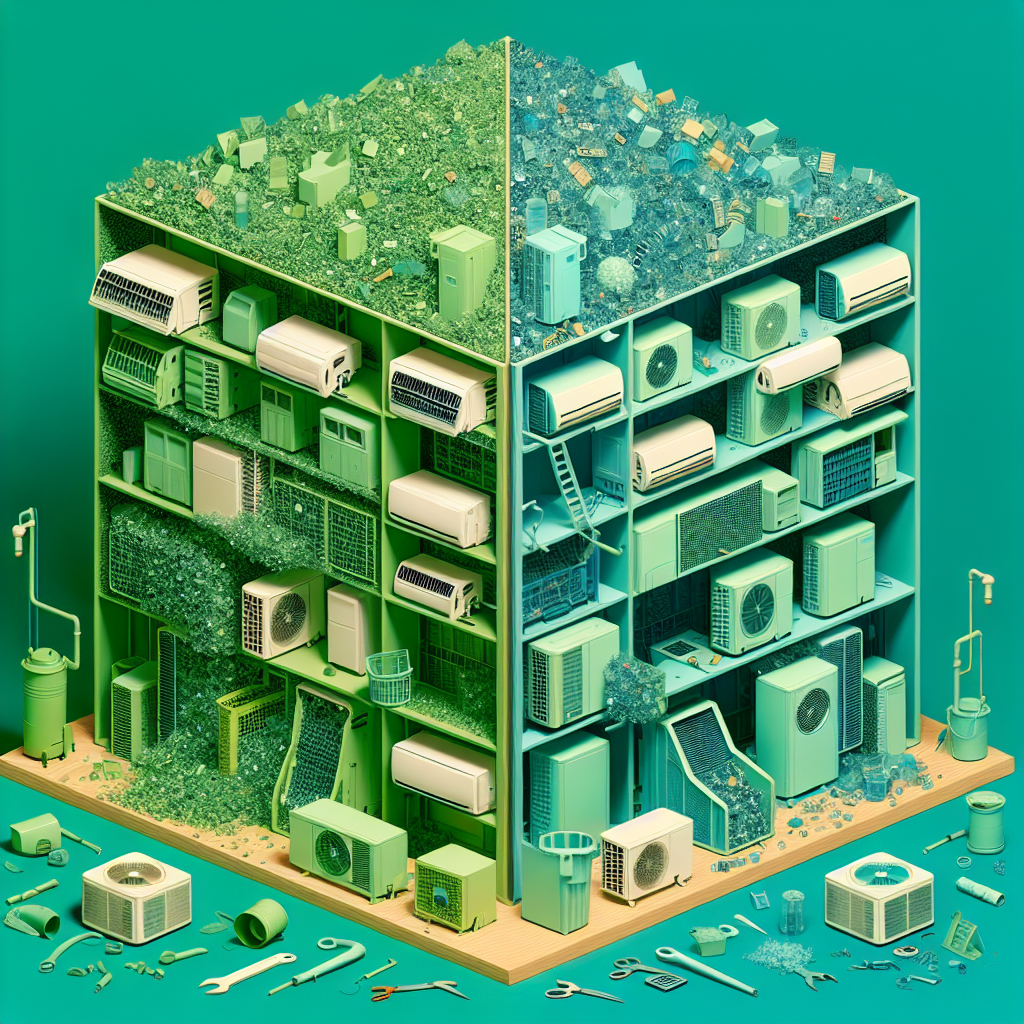Blog Ecobraz Eigre

Split or window air conditioning: differences in recycling
Introduction to the recycling of split and window air-conditioners
The recycling of air-conditioning systems, whether split or window, is an essential practice for environmental compliance and for minimizing the ecological impacts of improper disposal of this equipment. It is an activity regulated by Brazilian environmental legislation, especially with regard to the handling of hazardous substances associated with refrigerants and other electronic components.
Main structural differences and their impact on recycling
Split-type air conditioning consists of two main units: the internal evaporator and the external condenser, connected by copper pipes and electrical lines. The window model, on the other hand, integrates the entire system into a single compact unit. These structural differences directly influence the processes of disassembly, identification and segregation of recyclable materials and hazardous waste.
Recyclable and hazardous components in split and window air conditioners
Both types contain recyclable metals, such as copper in pipes and electrical components, as well as aluminum and steel in their housings. The handling of refrigerants (such as R-22 or R-410A gases) must comply with the protocols laid down in environmental legislation to avoid the emission of greenhouse gases. According to CONAMA Resolution 420/2009, the proper handling and capture of refrigerants during disposal is mandatory.
Because they contain electronic circuits, appliances require special attention in terms of the collection and correct disposal of electronic waste, according to the National Solid Waste Policy (Law 12.305/2010), with emphasis on the procedure for collection and safe disposal. To schedule e-waste collection services, see electronics scheduling.
Applicable legal aspects and regulations
Air conditioning recycling is mainly regulated by the National Solid Waste Policy (Law No. 12.305/2010) and CONAMA Resolution No. 420/2009 regarding the management of refrigerants. Incorrect disposal can lead to penalties under the Environmental Code and compromise compliance with federal environmental standards. CETESB (Environmental Company of the State of São Paulo) stresses the importance of recycling and correctly sending this equipment to licensed bodies (source: cetesb.sp.gov.br).
Different recycling processes between split and window
In split air conditioning, disassembly requires capturing and recovering the refrigerant gases in the external condenser unit before proceeding with the separation of metals and electronic components. The window model, on the other hand, has the advantage of greater simplicity in disassembly, but concentrates all the elements in a single module, requiring concentrated care to avoid the release of harmful substances.
Final considerations and best practices
For the responsible disposal of this equipment, it is recommended to sanitize sensitive media and electronic components, especially hard drives and boards, guaranteeing information security and preventing contamination. For this service, go to electronics scheduling.
It is important to adhere to current environmental policies, to train staff in correct handling and to use licensed intermediaries for recycling and final disposal, ensuring legal and environmental compliance.

Deixe um comentário
O seu endereço de e-mail não será publicado. Campos obrigatórios são marcados com *